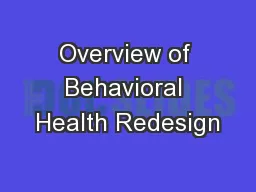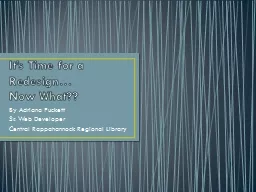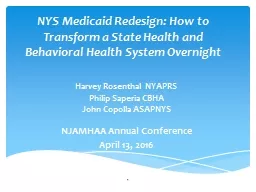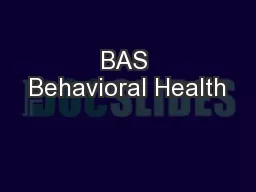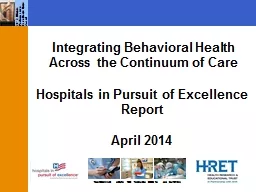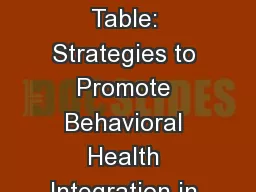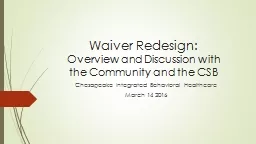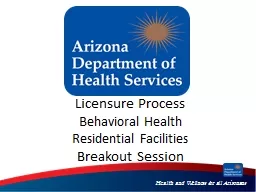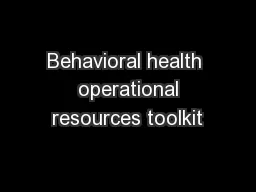PPT-Overview of Behavioral Health Redesign
Author : alida-meadow | Published Date : 2018-10-27
Summit Psychological Associates Inc State of Ohio Behavioral Health Redesign State will require changes as of January 1 2018 Managed Care changes will go into effect
Presentation Embed Code
Download Presentation
Download Presentation The PPT/PDF document "Overview of Behavioral Health Redesign" is the property of its rightful owner. Permission is granted to download and print the materials on this website for personal, non-commercial use only, and to display it on your personal computer provided you do not modify the materials and that you retain all copyright notices contained in the materials. By downloading content from our website, you accept the terms of this agreement.
Overview of Behavioral Health Redesign: Transcript
Download Rules Of Document
"Overview of Behavioral Health Redesign"The content belongs to its owner. You may download and print it for personal use, without modification, and keep all copyright notices. By downloading, you agree to these terms.
Related Documents

